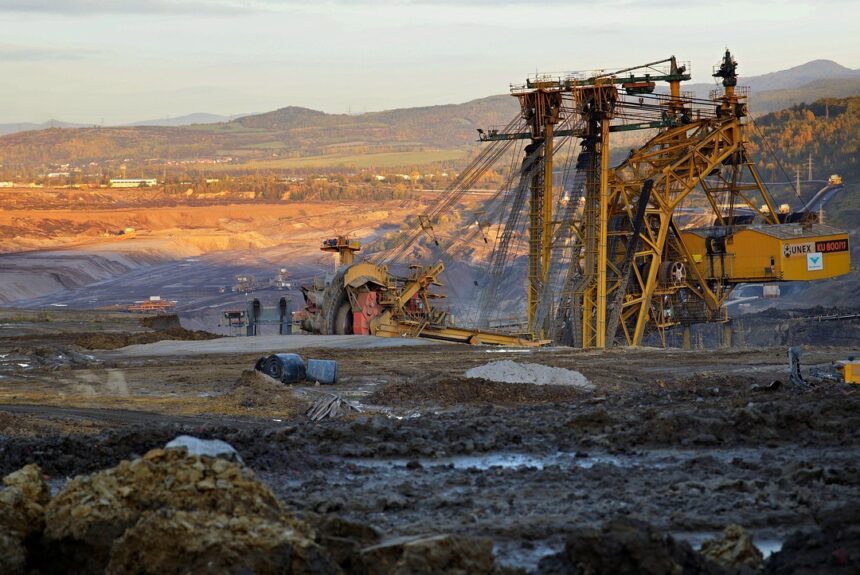The United States continued dominance as a global energy leader is directly tied to our ability to innovate and stay ahead of our competition. Yet, one key component to keeping our competitive edge is the modernized sourcing and domestic production of critical minerals, which serve as the building blocks of decreasing America’s leverage on foreign mineral production.
>>>READ: Biden Administration Fast-Tracks Critical Minerals Project
Critical minerals are the backbone of how the U.S. economy properly functions: they power our electronics, smartphones and renewable energy infrastructure. The United States Geological Survey (USGS) says there are 35 minerals labeled “critical” because of their contribution to America’s national and energy security. These minerals, including rare earth elements, lithium and cobalt are crucial if the United States wants to successfully expand its position as a clean energy proponent.
The United States is over-leveraged on foreign imports for dozens of these critical minerals. A report from the US Department of Energy shows that more than half of its required 35 critical minerals, including 80 percent of rare earth elements and 100 percent of cobalt, are sourced from overseas. What’s more, China continues to monopolize the rare earth market, controlling more than 80 percent of this sector.
This overreliance on such imports presents a significant flaw in America’s domestic supply chain. Trade disputes, geopolitical tensions and other economic situations could easily create vulnerabilities in our access to these resources, jeopardizing technological headway and further setting back any progress toward reducing this dependency. The COVID pandemic has already highlighted the dangers of relying too heavily on global supply chains, as it led to shortages of critical medical supplies and equipment.
To prevent these risks, the U.S. needs to supercharge its critical mineral apparatus. In 2020, President Trump signed an executive order aimed at addressing this issue by identifying ways to increase domestic production of critical minerals, reduce permitting times, and promote research and development. While this is a promising start, Congress must advance the development of mining sites to ensure the United States is self-sufficient in the mineral industry.
The Lower Energy Costs Act (H.R.1) includes several provisions that incorporate reforms to our unnecessarily obstructive permitting system as well as spur innovative clean energy projects to enhance American mineral production. Since the majority of clean energy technologies are mineral dependent, this presents an opportunity for America to become a serious player in the critical mineral arena — especially considering how these technologies require a high amount of critical minerals. The recent debt ceiling bill provided a good first step to address permitting backlogs, but more meaningful reforms must be adopted to unlock America’s critical mineral resources.
>>>READ: Debt Ceiling Permitting Provisions Offer Good First Step to Meaningful Reform
Additionally, the DOE has taken notice of the importance to prioritize America’s role in expanding domestic mineral production. The agency launched the Energy Storage Grand Challenge, a program designed to expedite the commercialization and utilization of next-generation energy storage technologies that include manufacturing critical minerals. The initiative will address the increasing demand for viable energy storage solutions, a significant next step if the U.S. wants to integrate energy alternatives into the power grid and secure grid stability.
Investing in the domestic production of critical minerals will not only secure our supply chain but also create high-quality jobs in mining and manufacturing, driving economic growth. The development of a robust critical mineral industry will also support the transition to a greener economy by providing the necessary materials for renewable energy technologies, such as wind turbines and electric vehicle batteries.
Both the public and private sectors must join forces to streamline our inadequate permitting process and offer financial incentives that allow companies to invest in domestic critical mineral production. By investing in domestic production and working closely with our international partners, we can secure a sustainable and prosperous future for generations to come. It is time for the United States to prioritize critical mineral production in order to secure its economic and technological future.
Jorge Velasco is a student at George Mason University’s Schar School of Policy and Government. Follow him on Twitter @velascoAjorge.
The views and opinions expressed are those of the author’s and do not necessarily reflect the official policy or position of C3.
